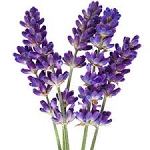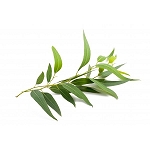
Selecting Home Fragrances: How to Deconstruct AromasFinding a home fragrance that suits you can be a challenging task. It is often done by trial and error; smelling one thing after another, until your nose protests and your head is spinning. You try shopping online and that poses an entirely different challenge – there is nothing to smell! In either case your shopping experience will be easier if you know more about how fragrances are structured and have an idea what fragrance styles you prefer. These two bits of information will narrow your search and make shopping for home fragrances more fun.
Like the perfumes that we wear, home fragrances (fragrance oils, incense, sprays, candles, etc.) are composed of notes, aromatic impressions left by the different fragrance ingredients. These notes come in three ranges -- top notes, middle notes, and bottom notes – and are mixed to create a balanced fragrance chord. If the chord is in tune it will be heard well by your nose. Music metaphors are common in the fragrance world. It takes a skilled blender to compose a truly outstanding fragrance. The Japanese incense company Lisn derived its name from “listen” because the Japanese verb for “to listen” is used when referring to incense appreciation. The Japanese verb for “to smell” is used for smelling things in general but “to listen” to a fragrance is to truly understand what it has to say. Aromatic notes are divided into ranges based on the tenacity of the fragrance, which is related to their volatility. Top notes evaporate the quickest and bottom notes remain the longest. How these notes are arranged determines how well the composition holds up. Top notes are the first aromas to reach our nose. They can make a powerful immediate impression and tend to be more sharp and penetrating. Top notes are either hot or cold fragrances, not warm. They add lightness to the weightier middle and bottom notes. Common top notes include orange, lemon, pine, mandarin, cypress, rosemary, nutmeg, mint, and eucalyptus. Middle notes reach our nose next. They are the warmer notes and create balance in the fragrance. The majority of middle notes are floral fragrances. Common notes include carnation, clove, geranium, jasmine, rose, lemongrass, and violet leaf. Bottom notes are the deepest and most resonating of the fragrances. They are heavy and rich aromas. Bottom notes are the last to dry out so they will linger the longest. Common notes include sandalwood, amber, vanilla, patchouli, green tea, and black tea. Not all home fragrances are based on complex aromatic chords. Some are straight forward single scented products or a blend of just two or three complimentary fragrances. These can be just what you need if you have a strong preference for a particular note, especially when it is a light base note or warm middle note. However, when branching out into more complex blends try to think about where your favorite fragrance falls in the range of notes. A lemon top note can easily be overpowered by the heavier middle and base notes, still detectible but not that sharp citrus aroma that you might be seeking. As you think more about what you like and how it fits into the fragrance world you will find it easier to select something that suits your aromatic style. Just remember, the more complex blends are more distinctive fragrances, and can provide your home with a unique aromatic atmosphere. Know what you like, but still venture out and try something new once in a while.
|










|
Products |
| Home Diffusers |
| Accessories |
|
Articles |
What is the Difference Between Heat, Fan, Vaporizing and Atomizing Diffusers?
Which Diffuser is Best?

Home Diffusers Accessories Articles Contact Us
Copyright © 2006-2021 Unique Scented Products | www.uniquescentedproducts.com | All Rights Reserved.